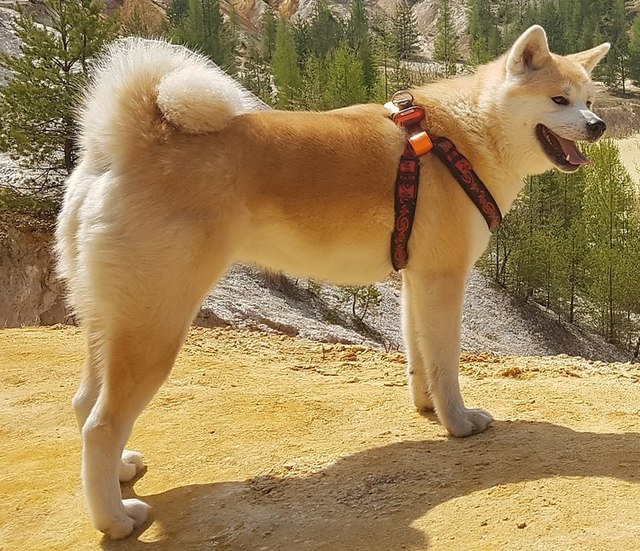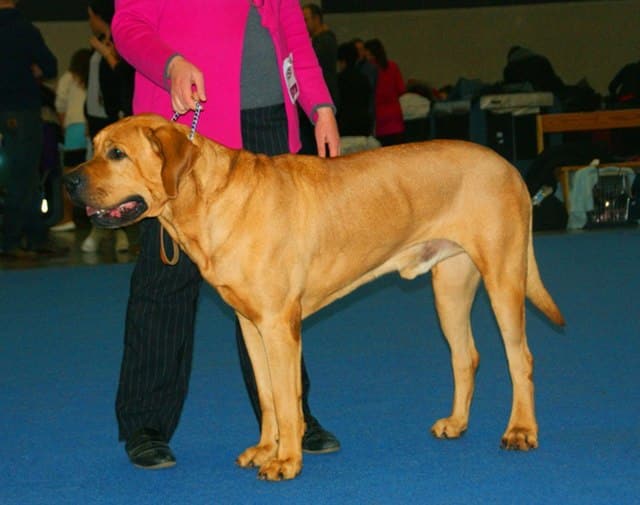7 Japanese Dog Breeds: Traits, Habits & Significance
Japan is indeed associated with the beauty of the rising sun, unique culture, impressive cuisine, and unforgettable cherry blossoms. Evoked too much emotion, right?
This is just the beginning – we are going to tell you about authentic Japanese dog breeds and deepen your appreciation of Japanese culture!
Well, when it comes to dogs, Japan has a rich heritage of unique and beloved breeds. Japanese dog breeds have won the hearts of people worldwide with their distinct qualities. As you delve deeper into the world of Japanese dog breeds, you’ll find that these dogs are more than just companions – they embody Japanese culture, as each breed reflects different facets of Japan’s rich traditions.
As we explore the world of Japanese dog breeds, you’ll discover how each one reflects different aspects of Japan’s rich history and values. So, let’s learn about the famous Japanese dog breeds, their unique characteristics, and their historical significance.
7 Most Authentic Japanese Dog Breeds
1. Akita

You might have heard about Hachiko, the devoted dog that waited at a Japanese train station for its owner long after he had passed away. If so, you’re likely familiar with the Akita Inu, one of Japan’s most famous dog breeds, which is even considered a national symbol and is sometimes called the Great Japanese Dog.
Originally, these Japanese dog breeds were skilled hunters, thanks to their webbed feet that help them navigate snowy terrain and front dew claws that act like ice picks to get a grip when coming out of icy water. Once, Akitas were exclusively owned by the Imperial family in Japan, but now they’re beloved family members in houses all around the world.
Akitas has quite a strong personality, which can have both positive and negative aspects. Akitas make excellent guard dogs and are cautious around strangers without being overly aggressive. They also get along well with children. However, they can be a bit territorial when interacting with other dogs.
Still, even though they may occasionally display independence, Akitas are generally easy to train. Akitas are so well-behaved and disciplined that they are used as police dogs in various countries.
2. Shiba Inu

Shiba Inus have a long history in Japanese culture, dating back to around 7000 B.C. when they served as hunting dogs. The Shiba Inu is undeniably one of the most beloved Japanese dog breeds and is even considered a national treasure. This breed is the tiniest among Japan’s spitz dogs. Shiba Inus are characterized by their small, pointed ears, wedge-shaped snouts, and curly tails. You may have already seen this description many times on memes. Don’t you?
Another interesting aspect of Shibas is their grooming habits, which resemble those of cats. They dedicate a significant amount of time to cleaning themselves and therefore showcase a distinctive feline trait among dogs.
Today, encountering these dogs in Japan is quite common. However, after World War II, they nearly faced extinction due to the bombings and the spread of distemper in Japan. In recent times, there has been a trend to breed smaller Shibas, often referred to as “mame” or bean-sized Shibas, which are exceptionally adorable and well-suited for apartment living.
3. Hokkaido

The Hokkaido dog falls somewhere between the Akita and Shiba in terms of appearance. They’re smaller than Akitas but larger than Shibas. Just like Shibas, Hokkaidos have a thick, fluffy, and soft coat, but what sets them apart is their double coat, a feature not common in many other Japanese dog breeds. This double coat comes in handy to keep them warm in the chilly winters of Hokkaido, the northernmost island in Japan.
Some people even believe that the Hokkaido might be one of the oldest Japanese dog breeds. According to some historians, these dogs might have evolved from the Matagi-ken, a hunting dog that existed around 3,000 years ago.
Their natural hunting instincts bless them with a keen sense of smell and a healthy dose of self-assurance. However, when they’re at home, they exhibit extreme calmness, which makes them great companions for kids.
It’s a good idea to train Hokkaidos to be around children and small animals from a young age to curb their natural hunting instincts. Thankfully, Hokkaidos are intelligent and have a strong appetite for food, making them easy to train.
4. Japanese Mastiff

The Tosa Inu, also known as the Japanese Mastiff, has its origins in the Tosa region, where the history of dog-fighting has traditionally been and, in some places, is still acceptable. They have a short, sleek coat that can come in red, brindle, or fawn colors. Due to their imposing size, some countries have banned the Tosa Inu. But, in reality, Tosa Inus are known for their willingness to form strong bonds with their family members. These dogs are characterized by sensitivity, loyalty, and a quiet demeanor, making them excellent guard dogs and suitable for families with children.
5. Kai Ken

The Kai Ken is easily recognizable among the original Japanese dog breeds and is often affectionately known as the tiger dog due to its unique coat colors. These dogs were originally bred for hunting purposes, targeting wild boar, deer, and fowl. Due to its origin in the mountainous regions of Japan, Kai Ken has developed speed and well-defined muscles over time.
Kai Kens are notably intelligent and quick learners. Due to their ancestral background, they are quite active and maintain a strong hunting instinct. As a result, it’s advisable not to let a Kai Ken roam without a leash, as they are likely to be drawn to intriguing scents!
6. Japanese Chin

The Japanese Chin, also known as the Japanese Spaniel, is a dog breed that boasts a distinct appearance. It features a broad head, a flattened face, floppy V-shaped ears, wide-set eyes, and a fluffy tail. Interestingly, even though they are called Japanese Chins, their origins likely trace back to Korea or the Chinese imperial court, dating back more than 500 years.
These charming dogs were highly valued by the Japanese aristocracy, and they were often presented as gifts to foreign officials. It’s believed that they made their way to Japan as presents to the Japanese emperor. However, these little hounds remained relatively unknown until 1853, when Commodore Matthew Perry visited Japan and initiated international trade.
7. Japanese Spitz

For those seeking a petite and affectionate family companion with a natural protective instinct, this might be the perfect choice. These adorable dogs sport a distinct look with their wedge-shaped snouts, alert ears, and fluffy coat. At first glance, you might mistake them for American Eskimo Dogs, white Pomeranian dogs, or even Samoyeds.
Japanese Spitz dogs come with a variety of appealing qualities, ranging from their cleverness and ease of training to their minimal grooming requirements and friendly demeanor.
Can I have a Japanese Dog Breed?
Acquiring Japanese dog breeds can be quite challenging if you’re not in Japan. That’s why many people choose to visit Japan with the hope of bringing home a furry companion. But still, bringing a traditional Japanese dog from the country of the rising sun to your homeland has its own set of difficulties. For instance, some breeders may be reluctant to export certain traditional Japanese dog breeds since they are considered valuable national treasures. While considering moral value, financial cost is another factor to consider. Prices for dogs in Japan can vary, but generally, younger puppies (around 2 months old) tend to be less expensive than older ones.
When you’ve decided on your Japanese puppy, there are additional expenses involved in preparing for export. These include vaccinations, microchipping, Animal Quarantine Inspection, and various other costs.
Shipping a dog from Japan to your country can also vary in price, depending on where you’re located. It’s essential to check if the airline you plan to use allows pet transportation and be aware of associated fees, which can exceed $200.
Understanding the import regulations of your country is crucial. For instance, many European countries may require rabies vaccination and a 21-day quarantine period in Japan. So, to simplify the process, you might find it more convenient to seek out a Japanese dog breed exporter who can connect you with a breeder and handle the necessary paperwork on your behalf.
Final Thoughts
So, what makes Japanese dog breeds so captivating? Is it their spirited personalities, their unwavering loyalty, or perhaps their rich historical backgrounds?
Or maybe it’s the fact that Japanese dog breeds offer a wonderful range of characteristics, from spirited and adventurous to gentle and loyal. Whether it’s the regal Akitas, the spirited Shiba Inus, or the adorable Japanese Chins, these breeds have a unique charm that has won them admiration worldwide.
Japanese dogs are known for being secure and affectionate, and many were originally bred for hunting, giving them a natural sense of security and a strong prey drive. With their rich history, distinctive features, and unwavering loyalty, they make cherished companions for individuals and families alike. They are all lovable and make great family pets, so you can choose the one that’s perfect for your family and you!

Nato is a content writer and researcher with a background in psychology who’s eager to explore the wonders of nature. As a travel enthusiast and animal lover, she hopes to inspire others to discover and cherish the beauty and importance of the natural world.







